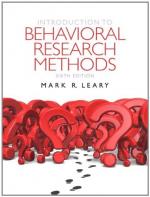|
This section contains 1,438 words (approx. 5 pages at 300 words per page) |

|
Remote sensing is a technique that gives information about the surface of the Earth and the underwater world without touching the surface. The technique bounces energy off of nonliving or living objects and analyzes the returning signal to collect information.
Remote sensing has many uses in water. Common uses of remote sensing include charting the depth of a lake or ocean bottom. It is vital to the fishing industry and in locating objects at the bottom of the water. Treasure hunters and researchers would find it much harder to detect lost shipwrecks if not for remote sensing. People interested in finding out where water pollution is occurring can take remote sensing images of water from planes or satellites (orbiting spacecraft) to detect microorganisms such as algae that thrive in polluted water. People who are trying to find deposits of oil and natural gas under the ocean...
|
This section contains 1,438 words (approx. 5 pages at 300 words per page) |

|



